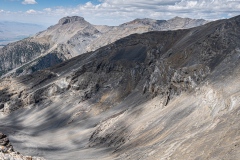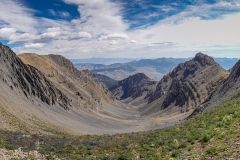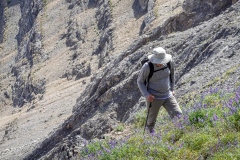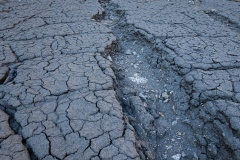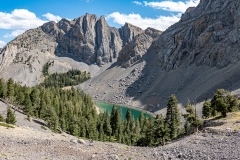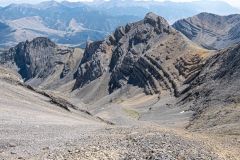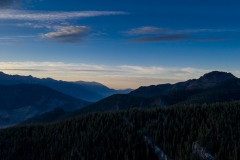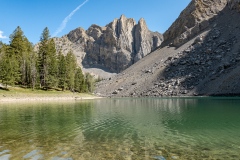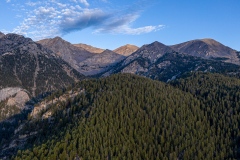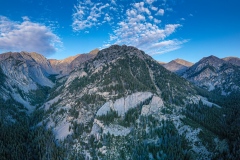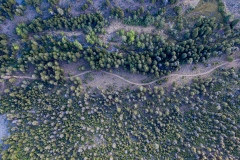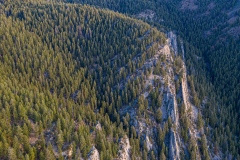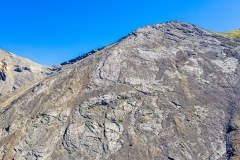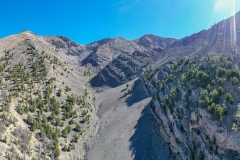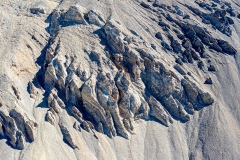I have a friend who has been caving for his entire life, on six continents, and frequently thousands of feet deep under the surface. He is known for his speed-based caving style, traveling through vertical alpine caves with limited gear and food, choosing to exchange the usual heavy loads and slow progress for speed and single-day achievements. He is literally twice as fast as I when moving through constricted cave environments!
We met in August in the Lost River Range, to pursue his other interest — searching for unknown and remote caves. This range is composed largely of limestone, which is the most common cave-forming geological layer. Searching for caves is simple and quite compatible with my style of adventure. It is mostly about getting high up in the ranges to move around looking for cave openings where they are most probable, on limestone layer boundaries located on the lee-side of ridges.

We chose a more southern part of the range, well south of the state’s most noted peak, Borah, which is Idaho’s highpoint at 12,662′. Our access was from the east side, which provided a more gentle approach until we hit the treeline at about 9,000′. Above that it was barren, steep, and rocky.

The ascent was tricky, with several cliff-forming “barriers” that I expected to cross based on my pre-trip reconnaissance. They did not disappoint and required careful navigation, my friend and I usually split up to search the most ground. We summited a ridge at about 11k’, and were greeted with an incredible view of the Mackay Valley and Pioneer Range to the west. At 20 years my senior, my caving companion is a strong hiker and powered through the ascent.

We did discover and visit two caves in the first day. The first was up near the ridge and huge. I called it “Bottomless Cave” since where it is positioned on a cliff, there was light coming from down in the cave where a portal opened up to the cliff face. Without rope I could only make it about 50′ down this entrance. The second cave drained a high limestone meadow and was about 40′ deep in total, filled with partially-dissolved, razor-sharp vertical rocks. We saw a number of other cave-like openings high on cliff faces, but were unable to reach them without additional gear.

On the way down we passed Bear Creek Lake, nestled below towering limestone cliffs just at the treeline. Looks like a great backpacking destination with a relatively short ingress. I’ll bring my kids back here in the future. There is also a well-known cave worth exploring on the way in, just after you drive through “Pass Creek Narrows”. The cave is called “Hidden Mouth Cave” and is on the USGS map at 43.95591, -113.43928.
Resources:
- There are good roads on both sides of the Lost River Range — the west side has Highway 93 and several small communities, while the east side has a well graded road through Pass Creek.
- Plenty of primitive camping sites on the foothills of the east side of the range. I camped at 43.98787, -113.46812.
- I am not posting a hiking track of this outing, to protect the cave finds. However there are many trails in the area and so much to explore!
Lessons Learned
- Next time I’ll bring a drone on the search to facilitate searching the unreachable cliffs, also a 40′ handline rope would have been nice for quick cave exploring
- I carried my Core Hiking Gear plus the following items:
- Helmet
- Nitrile gloves for cave use
- Serious headlamp
- Bear spray
Image Gallery

